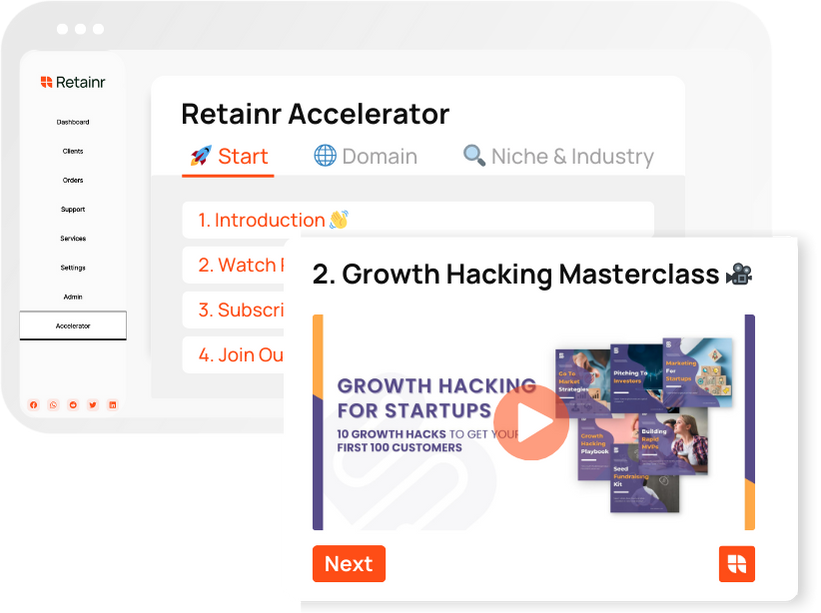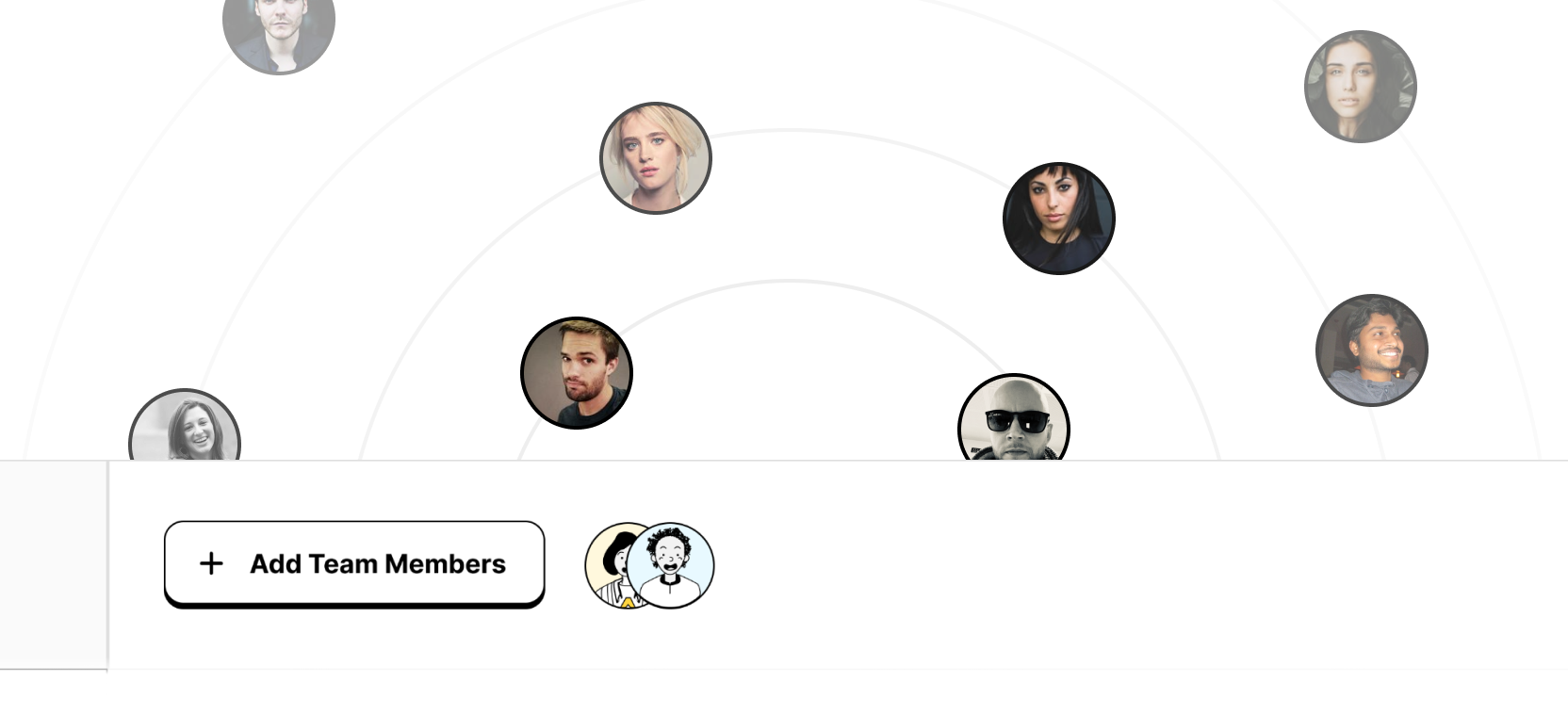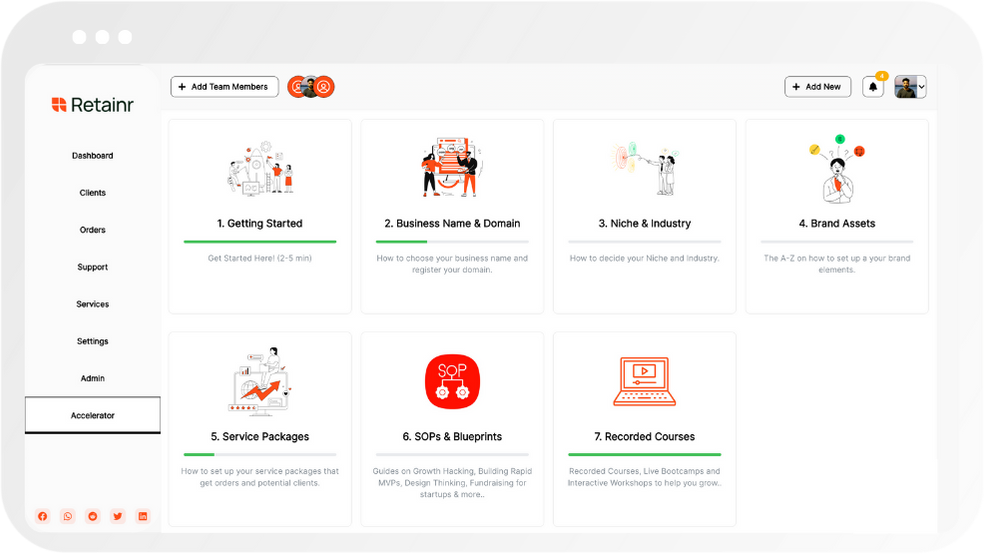
10 Data-Driven Techniques for Enhancing Lead Conversion
Build with Retainr
Sell your products and services, manage clients, orders, payments, automate your client onboarding and management with your own branded web application.
Get Started1. What are the top 10 data-driven techniques for enhancing lead conversion?
Data-Driven Techniques for Lead Conversion
Effective conversion of leads into customers is a key driver for business growth and profitability. Implementing data-driven techniques in the strategy optimization process can significantly enhance lead conversion rates. The top ten techniques include:
- Predictive analytics
- Event-driven marketing
- Conversion rate optimization (CRO)
- A/B testing
- Landing page optimization
- Customer segmentation
- Personalized email marketing
- Social media targeting
- Remarketing
- Search engine optimization (SEO)
Explanation of Techniques
Each technique differs in its approach and area of focus. Here is a brief explanation of each technique:
| Technique | Description |
| Predictive analytics | Utilizes historical data to predict future behavior, aiding in the personalization process and potential customer responses. |
| Event-driven marketing | Focuses on enhancing customer experience by triggering marketing actions based on events. |
| Conversion rate optimization | Involve analyzing and amending website elements to enhance customer experience and increase conversion rate. |
| A/B testing | Helps identify the best performing elements of a webpage or marketing campaign. |
| Landing page optimization | Enhances the design and content on a landing page to maximize conversions. |
| Customer segmentation | Groups customers based on several factors to create more targeted marketing strategies. |
| Personalized email marketing | Increases engagement by delivering content relevant to each individual subscriber. |
| Social media targeting | Targets potential customers based on their social media behaviors. |
| Remarketing | Targets people who have previously interacted with your brand but have not converted yet. |
| Search Engine Optimization | Increases website visibility and traffic, thus enhancing the chances for conversion. |
Implementing the Techniques
In implementing these techniques, it's important to remember that they need to be constantly tested and optimized. Aim for continuous improvement and don't be afraid to experiment. The key is to understand your customers better and cater to their needs and wants more effectively. Ultimately, the best strategy will depend on your own specific circumstances, such as your target audience, product offerings, industry, and capacity to leverage data. Use these techniques as starting points, then refine and adapt based on your data and results.
2. How can data analytics improve lead conversion rates?
Understanding the Role of Data Analytics in Lead Conversion
Data analytics plays a pivotal role in improving the conversion rates of leads by providing insights into consumer behaviors, preferences, and patterns. It leverages collected data to give a comprehensive understanding of potential customers such as likes, dislikes, and purchase history. Additionally, it helps to track and measure marketing strategies, hence enabling businesses to adjust their approaches based on real-time data. Moreover, effective use of data analytics can also help in predicting future trends, thus preparing companies for potential market shifts.
Integration of Data Analytics Techniques into the Conversion Process
- Segmentation: Data analytics allows businesses to segment their audience based on various characteristics such as demographics, shopping habits, and interests. This enables the delivery of personalized content that resonates with each segment, increasing the chances of conversion.
- Predictive Analytics: With the use of machine learning algorithms and statistical models, businesses can predict future consumer behavior. This predictive intelligence enables the creation of highly targeted marketing strategies.
- A/B Testing: Using data analytics, businesses can test different variations of their marketing campaigns to see what works best. This reduces the risk of ineffective strategies and enhances conversion rates.
Impacts of Data Analytics on Lead Conversion Rates
| Data Analytics Technique | Impact on Conversion Rate |
|---|---|
| Segmentation | Increased relevancy of marketing messages leading to higher conversion rates. |
| Predictive Analytics | Proactive marketing interventions based on predictive insights result in improved conversion rates. |
| A/B Testing | Optimized marketing strategies based on evidence-led decisions can significantly enhance conversion figures. |
3. Can you explain how predictive analytics can help in lead conversion?
Predictive Analytics and Lead Conversion
Predictive analytics play a significant role in improving lead conversion rates. By incorporating historical and real-time data, predictive models help businesses forecast future customer actions, enabling them to make data-driven strategies and decisions. There are three key ways predictive analytics help in lead conversion.
- Identifying high-quality leads: Predictive analytics can help you evaluate leads based on their likelihood of converting. This means you can prioritize high-quality leads and make effective use of your resources.
- Customizing marketing strategies: Predictive analytics gives detailed insights into customer behaviors and preferences. These insights can be leveraged to deliver personalized content, tailor marketing strategies and enhance customer engagement.
- Retaining existing customers: With predictive analytics, you can identify warning signs of customer churn. This allows you to take timely actions to re-engage and retain these customers, thereby improving lead conversion.
Here's an example of how a business might use predictive analytics to enhance their lead conversion:
| Step | Action |
|---|---|
| 1 | Collect and analyze historical sales data |
| 2 | Use predictive analytics to identify high-quality leads |
| 3 | Create personalized marketing strategies based on insights obtained |
| 4 | Implement these strategies to engage leads effectively |
| 5 | Track and assess results to refine future strategies |
In summary, predictive analytics empower businesses to be proactive, make informed decisions, and significantly improve their lead conversion rates.
4. How does customer segmentation as a data-driven technique enhance lead conversion?
Understanding Customer Segmentation
Customer segmentation is a data-driven technique that groups customers based on various characteristics such as geography, demographic information, behavior, and psychography. These groupings allow businesses to more specifically target their marketing efforts, improving the effectiveness of their campaigns and enhancing lead conversions. Instead of addressing the entire market as a whole, businesses can send tailored messaging to specific segments of the market, which often results in higher response rates.
- Geographic segmentation: involves grouping customers based on their location.
- Demographic segmentation: involves grouping customers based on variables such as age, gender, income, education level, and occupation.
- Behavioral segmentation: involves grouping customers based on their behavior, usage, and decision-making patterns.
- Psychographic segmentation: involves grouping customers based on their lifestyle, interests, attitudes, and opinions.
Benefits of Customer Segmentation for Lead Conversion
By understanding the nuances of different customer groups, businesses are better equipped to create targeted marketing materials that resonate with potential leads. Here are three key benefits of customer segmentation for enhancing lead conversion:
| Benefit | Description |
|---|---|
| Improved message targeting | By understanding who the customer is, businesses can craft tailored messaging that is more likely to engage and convert potential leads. |
| Better resource allocation | Segmentation ensures that marketing resources are not wasted on leads that are unlikely to convert, improving efficiency and ROI. |
| Increased customer retention | Customer segmentation helps businesses understand their clients' needs and preferences better, leading to improved customer satisfaction and retention. |
Implementing Customer Segmentation
The first step in customer segmentation is data collection. Businesses need to gather comprehensive data on their target market. This can be obtained through various means, including customer surveys, transaction records, and social media analysis. Once the data is collected, it is analyzed and used to create distinct customer segments. The goal is to ensure that each segment is distinct and homogeneous internally.
- Data Collection: Use various channels like customer feedback, online behavior tracking, etc.
- Data Analysis: Analyze the collected data to identify patterns and trends.
- Segment Creation: Divide the customer base into clear, distinct segments based on the identified trends.
- Segment Evaluation: Assess the effectiveness of the defined segments and refine if necessary.
5. How does A/B testing work in improving lead conversions?
A/B Testing and Lead Conversions
A/B testing, also known as split testing, is statistically-driven testing strategy that is used to compare two versions of a webpage or other content to determine which performs better in terms of lead conversions. The process essentially involves showing the two versions (A and B) to similar visitors at the same time, and then using statistical analysis to determine which version is more effective or provides a better user experience.
The techniques of A/B testing that can be used to improve lead conversions include:
- Call-to-Action (CTA) Testing: This involves altering the text, size, color, or placement of your CTA buttons to see which style leads to more conversions.
- Headline Testing: Your headlines are the first thing your visitors see, so testing different headlines can have a big impact on your conversion rates.
- Content Testing: You can also test different types of content (such as images, videos, or text), different placements of content, or different content lengths.
- Form Testing: If your lead conversion strategy includes a form, you can test different form lengths, types of fields, and locations on the page.
- Page Layout Testing: Testing different layouts for your page can also make a big impact. This can involve changing the arrangement of elements on the page, the color scheme, or the overall design.
| Technique | Description |
|---|---|
| Call-to-Action (CTA) Testing | Altering the text, size, color, or placement of your CTA buttons. |
| Headline Testing | Testing different headlines to see which ones drive more conversions. |
| Content Testing | Testing different types of content (such as images, videos, or text), placements, or lengths. |
| Form Testing | Assessing different form lengths, types of fields, and locations on the page. |
| Page Layout Testing | Experimenting with different arrangements of elements on the page, the color scheme, or the design. |
6. What role does social media data play in enhancing lead conversion rates?
The Role of Social Media Data in Enhancing Lead Conversion
Social media data plays a critical role in enhancing lead conversion rates. The myriad of information that potential customers share on different social media platforms provides a rich source of data that businesses can leverage to understand their audience better, tailor their marketing strategies, and improve their lead conversion rates.
Here is How Social Media Data can Enhance Lead Conversion Rates:
- Understanding Audience Preferences: By analyzing the likes, shares, and comments, businesses can gain insights into what kind of content or products their audience prefers. This enables them to tailor their products or content to meet these preferences hence increasing lead conversion rates.
- Identifying Lead Sources: Social media data can help businesses identify where their leads are coming from. By focusing their marketing efforts on platforms that generate the most leads, they can increase their lead conversion rates.
- Personalizing Marketing Messages: With the help of social media data, businesses can personalize their marketing messages based on the interests and behaviors of their potential customers. Personalized messages are more likely to be engaging and result in higher conversion rates.
Below is a Summary of How Social Media Data can improve Lead Conversion Rates:
| Activity | Potential Impact on Lead Conversion Rate |
|---|---|
| Understanding audience preferences | Leads to tailored products/content which improves conversion rates |
| Identifying lead sources | Allows businesses to focus their marketing efforts on platforms that generate the most leads |
| Personalizing marketing messages | Leads to engaging content that is more likely to convert leads into customers |
7. Can you provide examples of businesses that have improved their lead conversions through data-driven techniques?
Amazon
One of the most notable examples of a business that has improved its lead conversion through data-driven techniques is Amazon. The online retail giant uses Big Data analytics to conduct detailed customer segmentation and behaviour analysis. This lets them personalise recommendations for each individual user, increasing customer engagement and eventually sales conversions.
- Recommendation Engine: Their recommendation engine is based on items previously purchased, items in the shopping cart, items searched for, and items rated or reviewed. This predictive analytics method boosts their standard conversion rates significantly.
- A/B Testing: Amazon continually conducts A/B testing on its website to improve user experience and increase conversion. They test different ad variations, product description formats, landing pages, and even the speed of their website.
- Prime Membership: Prime membership offers free delivery and access to digital streaming content applications. Analysis of customer purchasing habits and their likelihood to convert into Prime members led to its introduction, thereby increasing conversions.
Netflix
Another exemplary case of improving lead conversion through data-driven techniques is Netflix, an entertainment service provider. They utilise viewer data to make informed decisions about what kind of content to create or purchase, identifying trends that drive subscriber growth.
| Technique | Effect on Lead Conversion |
|---|---|
| AI-powered algorithms | These algorithms analyze viewer watch history and preferences to make personalised content recommendations, driving engagement and conversion rates. |
| Data-driven content creation | Netflix uses Big Data to determine which types of content lead to the most viewer engagement. By creating more of this content, they enhance customer satisfaction and conversions. |
| Churn prediction | Netflix uses predictive analytics to identify when a customer is likely to cancel their subscription, allowing them to target these individuals with offers to increase retention and re-conversion. |
Google, the internet search giant, capitalises on data-driven techniques to drive revenue. Their free services like Search, Gmail, Google Maps, and YouTube generate enormous amounts of data, which Google uses to target ads effectively, thereby increasing lead conversions.
- Ad Personalisation: Personalised ads based on past searches, activity, and location increase the likelihood of customers clicking on ads and completing purchases.
- Google Analytics: Google Analytics provides detailed information about page views, bounce rates, average time on site, and conversion rates, which businesses can use to improve their website and drive conversions.
- AI and Machine Learning: Google uses these technologies for predictive analysis, enabling them to display relevant ads at the perfect timing, boosting click-through rates and conversions.
8. How does understanding customer behavior through data analytics enhance lead conversions?
Understanding Customer Behavior through Data Analytics
Data analytics allows you to gain a more profound understanding of your customer behavior. It gives an insight into the demographic information of the clients, how the clients interact with the website, and which product or service they are interested in. This data information aids significantly in personalizing the customer’s interaction with your brand which in turn enhances lead conversions.
Data-led Techniques for Understanding Customer Behavior
- Behavioral segmentation: This classifies customers based on their interactions with your brand. The behavior can be captured through number of visits, average spend, downloaded content, pages viewed, etc.
- Customer journey analysis: This involves tracking and analyzing how customers move through various channels. It helps to understand the touchpoints that led to conversion.
- A/B testing: This is a comparison of two versions of the same page to see which one performs better. This helps to eliminate the guesswork out of website optimization and enables data-backed decisions.
Effect of Understanding Customer Behavior on Lead Conversion
| Understanding Customer Behavior | Effect on Lead Conversion |
|---|---|
| Recognizing customer service preferences | Increases the chances of meeting customer needs and leads to conversion |
| Awareness of most visited site pages | Allows optimization of key pages to increase conversion rates |
| Knowing customer demographics | Enables personalized marketing that can result in higher conversions |
9. What are the steps involved in creating a data-driven lead conversion strategy?
Develop a Data-Driven Lead Conversion Strategy
A well-structured data-driven lead conversion strategy can drive your sales cycle efficiency and improve your overall marketing effectiveness. The essential steps involved in creating such a strategy include:
- Define your business objective.
- Identify your sources of data.
- Consolidate your data.
- Segment your leads.
- Develop lead scoring systems.
- Invest in analytics tools.
- Analyze your data.
- Create personalized campaigns.
- Measure your results.
- Optimize your strategy based on findings.
Understanding The Steps in-depth
Each of these steps holds significant importance in the data-driven lead conversion strategy:
| Step | Description |
|---|---|
| Define Your Business Objective | Identify what you aim to achieve with the lead conversion strategy. It could be to close more sales, revenue growth, or more. |
| Identify Your Sources of Data | Gather data from sources like your CRM system, Google Analytics, social media platforms, etc. |
| Consolidate Your Data | Merge data from all sources into one centralized system for a single view and easier analysis. |
| Segment Your Leads | Group your leads based on factors like their behavior, interests, and more to customize your approach. |
| Develop Lead Scoring Systems | Assign scores to your leads based on their interaction with your brand, which helps in prioritizing the leads. |
| Invest in Analytics Tools | Tools and software can help analyze the collected data and provide actionable insights. |
| Analyze Your Data | Analyze the data to understand your leads, their behavior, and your marketing effectiveness. |
| Create Personalized Campaigns | Use your analyzed data to create campaigns, targeting specific segments of your leads. |
| Measure Your Results | Track the results of your campaigns and strategies to assess their effectiveness. |
| Optimize Your Strategy Based on Findings | Finally, tweak your strategy based on your findings to increase your lead conversion rate. |
Bringing It All Together
By following these steps, you can build a data-driven lead conversion strategy that delivers tangible results. You can consistently test and refine your strategy to make it more effective in the long run.
10. What challenges might one face when applying data-driven techniques to enhance lead conversions?
Challenges in applying data-driven techniques
Despite the fruits of data-driven techniques for enhancing lead conversion, businesses should brace themselves for unpredictable hurdles along the way. Above all, the challenges usually encountered include data quality, privacy laws, and resource limitations.
- Data Quality: Low-quality data contribute to fewer conversions and wasted marketing efforts. Issues might arise from data inconsistency, insufficient data, outdated information, and inaccurate data. These problems often occur due to the enormous quantity of data involved, making it harder to maintain the accuracy and timely update of every single piece of information.
- Privacy laws: Current privacy laws are meant to balance personal privacy and commercial needs. However, they often pose significant challenges to data-driven businesses. Complying with numerous, at times conflicting privacy laws can be a complex and costly process. Non-compliance, on the other hand, can lead to stiff penalties and damage to a company's reputation.
- Resource Limitations: Data analytic processes requires an extensive amount of resources like skilled personnel, advanced analytic tools, and infrastructure. Small businesses and startups may struggle to provide these resources.
Analysis of the challenges
The challenges mentioned above can severely damper the efficiency and effectiveness of data-driven techniques. A more in-depth understanding of these challenges can provide a clearer path towards solutions.
| Challenge | Impact on Lead Conversion | Possible Solution |
|---|---|---|
| Data Quality | Poor data quality can lead to inaccurate targeting and lost opportunities. | Investment in data management systems, frequent data auditing, and data cleanliness protocols. |
| Privacy Laws | Non-compliance can lead to penalties and loss of customer trust affecting the lead conversion rate. | Staying updated with current legislation, secure data management and obtaining consent from leads. |
| Resource Limitations | Limited resources inhibit the maximum potential of data-driven strategies. | Training existing staff, outsourcing, or partnership with a data analytics company. |
Conclusion
Optimize Your Lead Conversion with Data-Driven Techniques
This blog provides insights into 10 key data-driven techniques for boosting lead conversion. It emphasizes the importance of understanding customer behavior, personalizing interactions, optimizing conversion paths and using automated software tools to manage and analyze leads more efficiently.
Understanding Customer Behavior
An essential way to drive lead conversion is by understanding your customer's behavior. Through data analysis, you can gain insights about your customers and their preferences, which enables you to tailor your offerings and marketing approaches accordingly.
Personalizing Interactions
Personalization is a key technique to enhance lead conversion. By analyzing the collected data, you can engage with your leads on a personal level, hence improving their experience and increasing the likelihood of conversion.
Optimizing Conversion Paths
Data-driven technique allows you to identify the most effective conversion paths. By collecting and analyzing data, you can streamline your paths, making it easy and attractive for potential customers to convert.
Utilizing Automated Tools
Using automated tools like Retainr.io can significantly improve your lead conversion rate. It centralizes all customer data and seamlessly manages all processes related to clients, orders, and payments. Also, it enables you to sell and manage your white label app more efficiently.
Conclusion
In conclusion, optimizing your lead conversion requires a deep understanding of customer behaviors, personalized interactions, optimized conversion paths and the right tools. By utilizing these data-driven techniques, you can significantly enhance your lead conversion rate. Check out Retainr.io today to see how it can automate and streamline your business processes for an improved conversion rate.
Boost Your Agency Growth
with Retainr Accelerator
Uncover secrets, strategies, and exclusive blueprints to take your agency's growth to the next level — from marketing insights to effective presentations and leveraging technology.

SOPs, Cheatsheets & Blueprints
Leverage 50+ SOPs (valued over $10K) offering practical guides, scripts, tools, hacks, templates, and cheat sheets to fast-track your startup's growth.
Connect with fellow entrepreneurs, share experiences, and get expert insights within our exclusive Facebook community.
.jpg)

Join a thriving community of growth hackers. Network, collaborate, and learn from like-minded entrepreneurs on a lifelong journey to success.

Gain expertise with recorded Courses, Live Bootcamps and interactive Workshops on topics like growth hacking, copywriting, no-code funnel building, performance marketing and more, taught by seasoned coaches & industry experts.

.jpg)

.jpeg)


